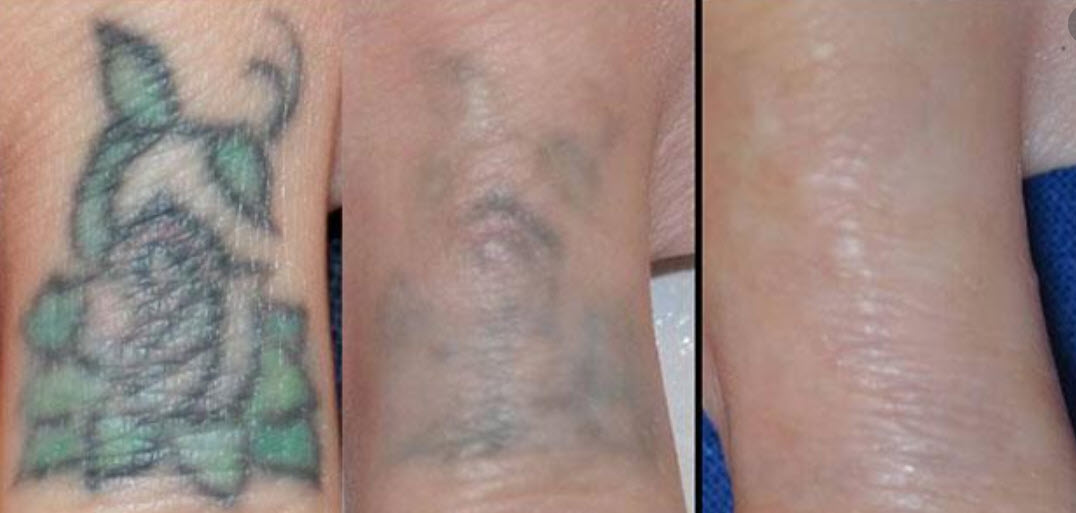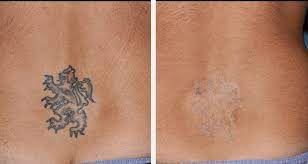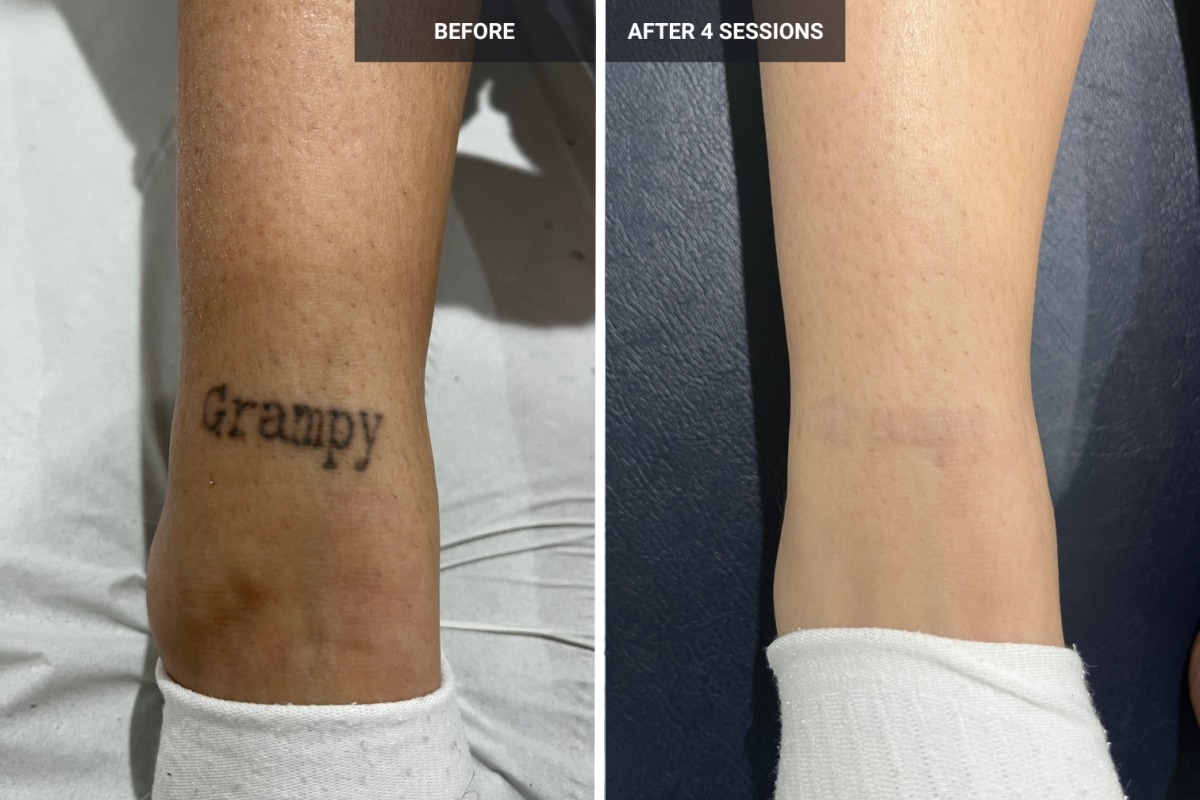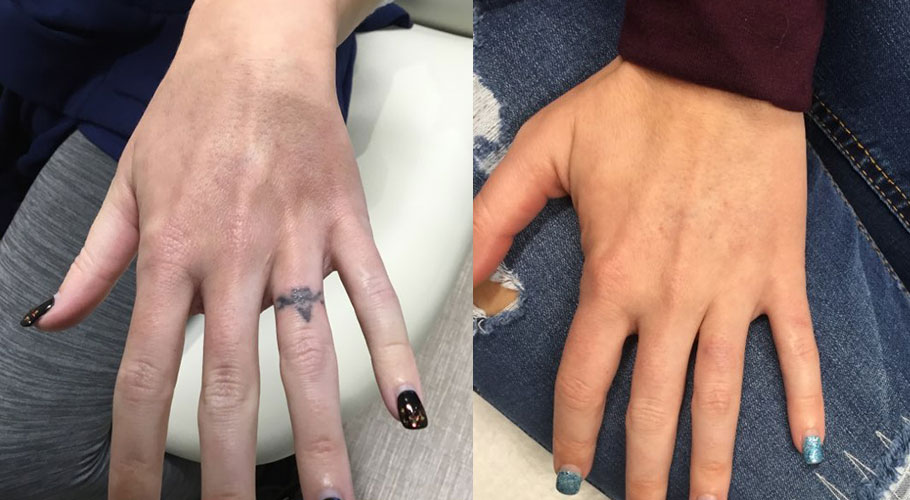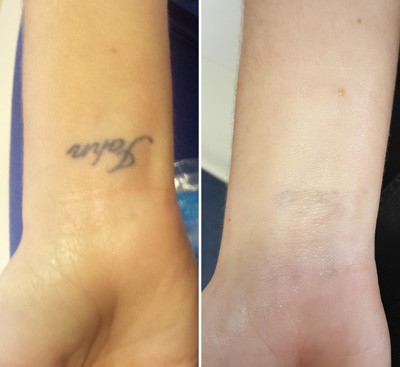Tattoo removal is a process that involves the gradual fading or complete elimination of a tattoo from the skin. Typically, it's done using various techniques, the most common being laser removal. During a laser removal session, highly concentrated beams of light are directed at the tattooed area, breaking up the ink particles into smaller fragments that can be naturally absorbed and eliminated by the body's immune system over time. The procedure may cause some discomfort, often described as feeling like rubber bands snapping against the skin, but numbing creams or local anesthesia can be applied to minimize pain. Multiple sessions are usually required for optimal results, spaced several weeks apart to allow the skin to heal between treatments. Depending on factors like the size, colors, and depth of the tattoo, complete removal may not always be possible, and some residual pigmentation or scarring may remain. Additionally, alternative methods such as surgical excision or dermabrasion may be considered in certain cases. Overall, tattoo removal is a meticulous process that requires patience and commitment but can ultimately help individuals achieve their desired appearance.
